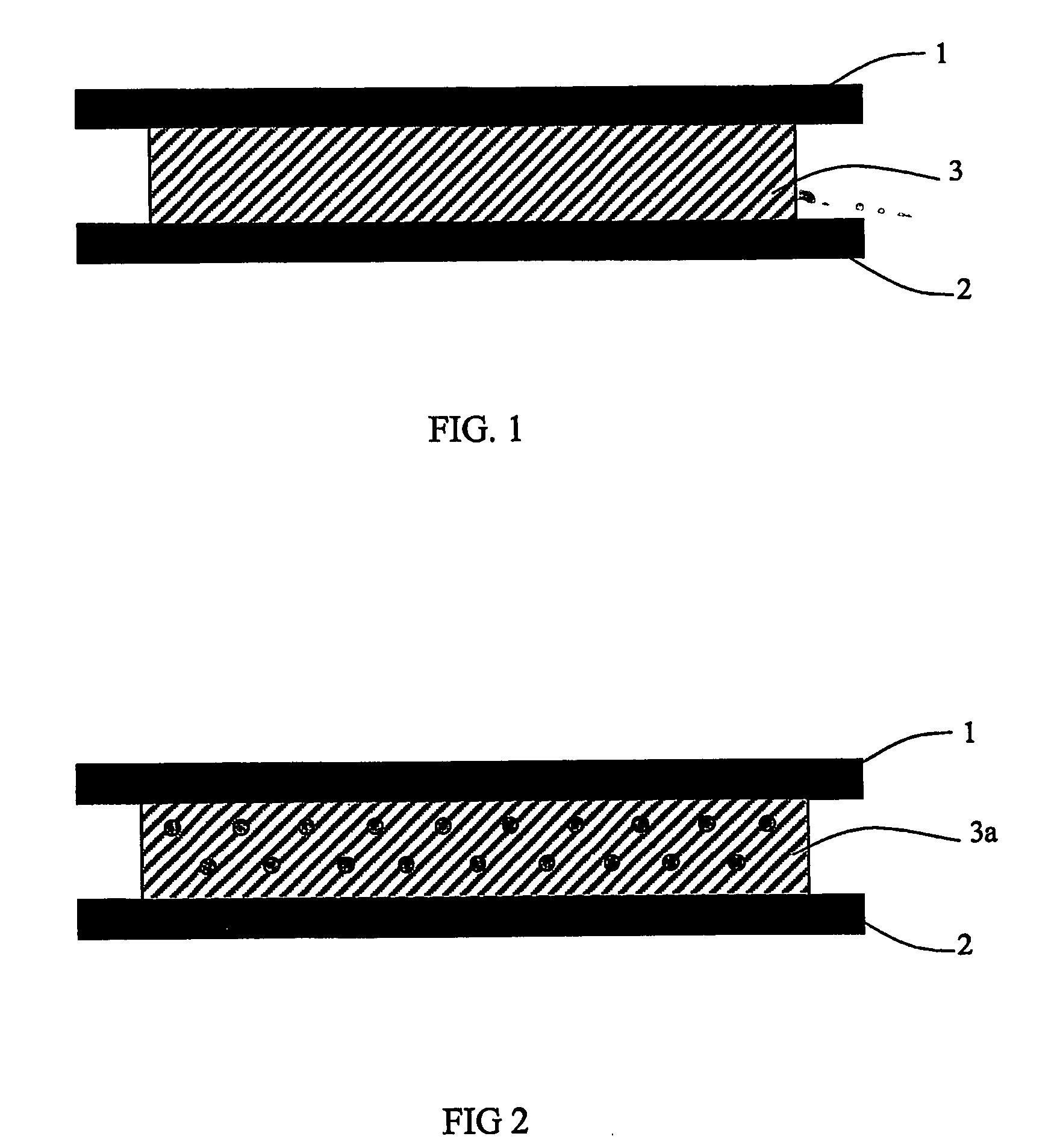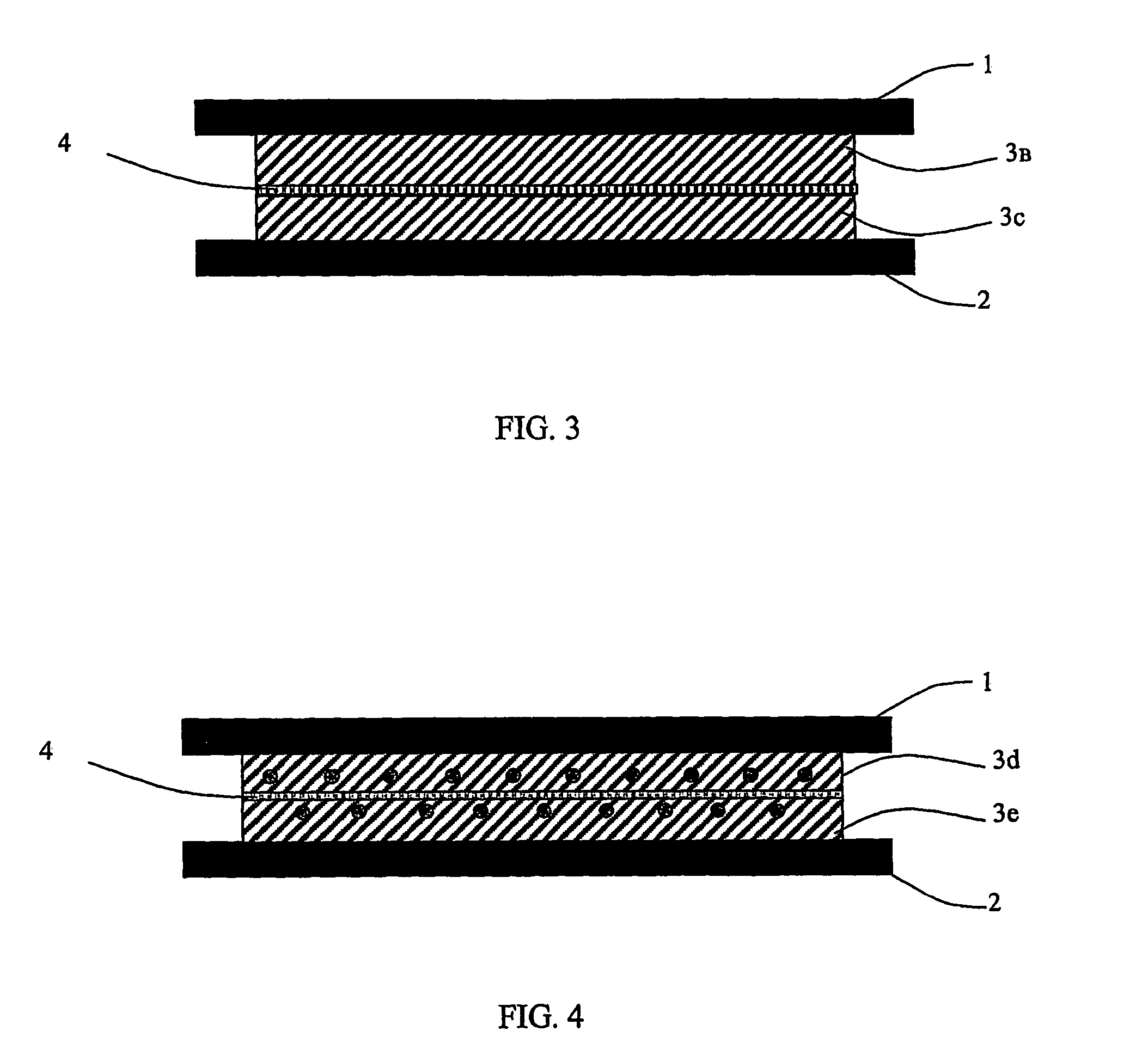Memory cell
- Summary
- Abstract
- Description
- Claims
- Application Information
AI Technical Summary
Benefits of technology
Problems solved by technology
Method used
Image
Examples
Embodiment Construction
[0039] The claimed memory cell (FIGS. 1 through 8) contains two continuous aluminum electrodes 1 and 2 between which there is a single layer functional zone consisting of one active layer which can be doped by ions 3 or electrolyte clusters 3a (FIG. 1-2) or two active doped layers 3b and 3c (FIG. 3) or two active layers with electrolyte clusters 3d and 3e (FIG. 4) separated by a barrier layer 4. FIGS. 5 through 8 show the multilayer functional zones, consisting of one active layer 3 and one passive layer 5 (FIG. 5) or of one active layer 3, one barrier layer 4 and one passive layer 5 (FIG. 7) or of two active layers 3b and 3c, one barrier layer 4 and two passive layers 5a and 5b (FIG. 8).
[0040] In FIGS. 9 through 11 the claimed memory cell contains aluminum electrodes 1 and 2 where the top electrode 1 consists of two elements 1a and 1b. Between the electrodes there is a single layer functional zone, consisting of one active layer 3 (FIG. 9) or a multilayer functional zone consisting...
PUM
| Property | Measurement | Unit |
|---|---|---|
| Time | aaaaa | aaaaa |
| Electrical conductivity | aaaaa | aaaaa |
| Structure | aaaaa | aaaaa |
Abstract
Description
Claims
Application Information
 Login to View More
Login to View More - R&D
- Intellectual Property
- Life Sciences
- Materials
- Tech Scout
- Unparalleled Data Quality
- Higher Quality Content
- 60% Fewer Hallucinations
Browse by: Latest US Patents, China's latest patents, Technical Efficacy Thesaurus, Application Domain, Technology Topic, Popular Technical Reports.
© 2025 PatSnap. All rights reserved.Legal|Privacy policy|Modern Slavery Act Transparency Statement|Sitemap|About US| Contact US: help@patsnap.com



